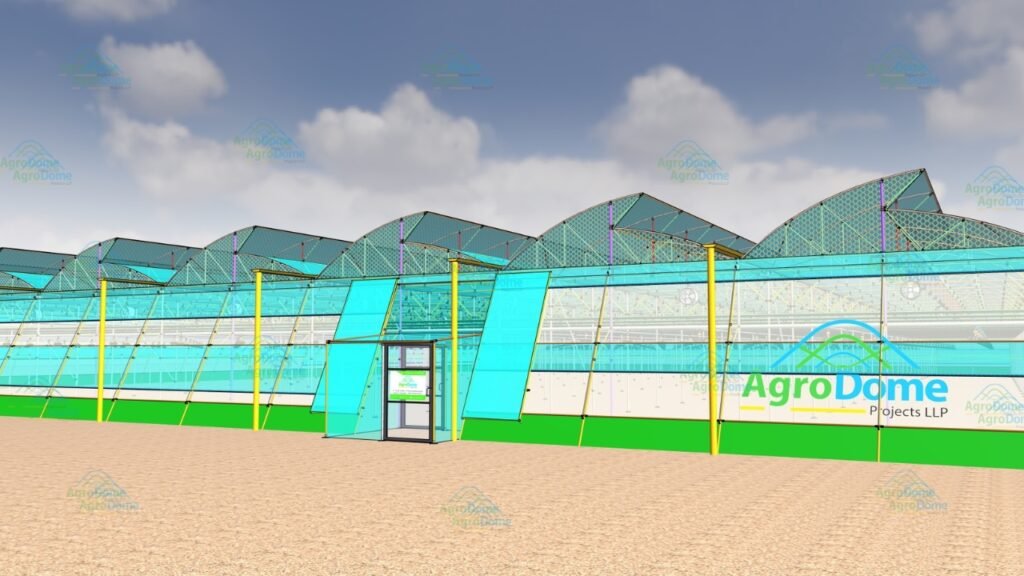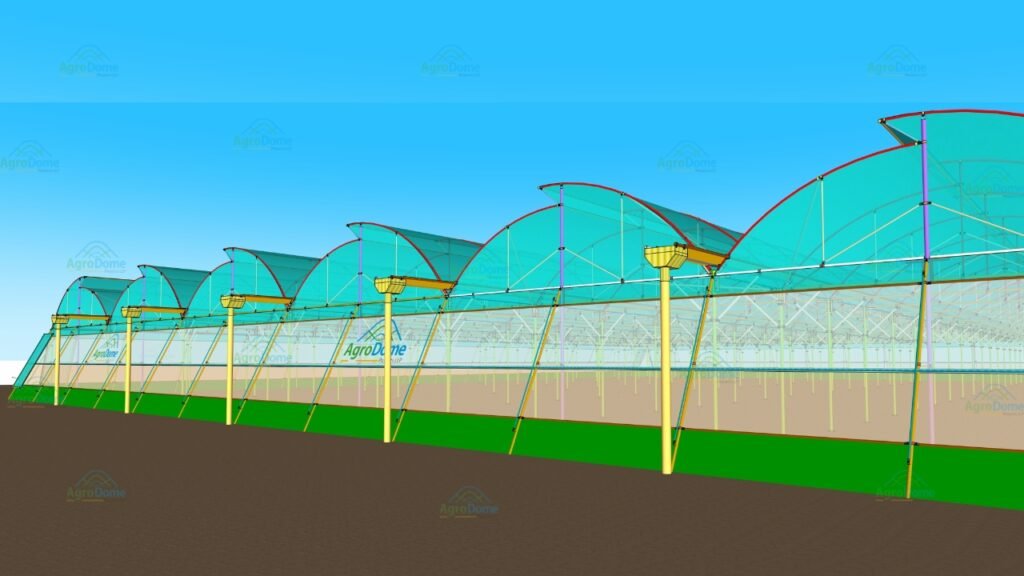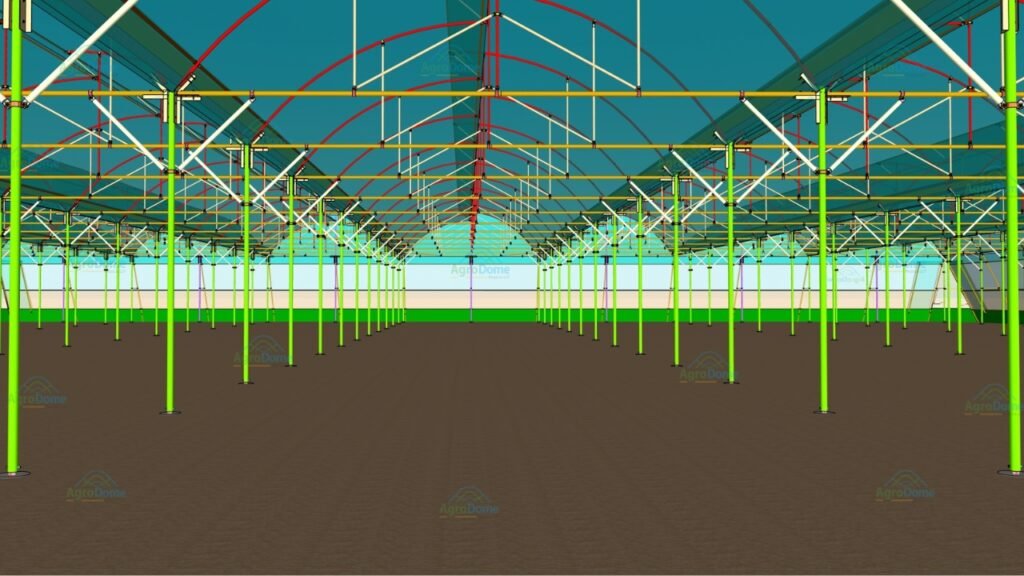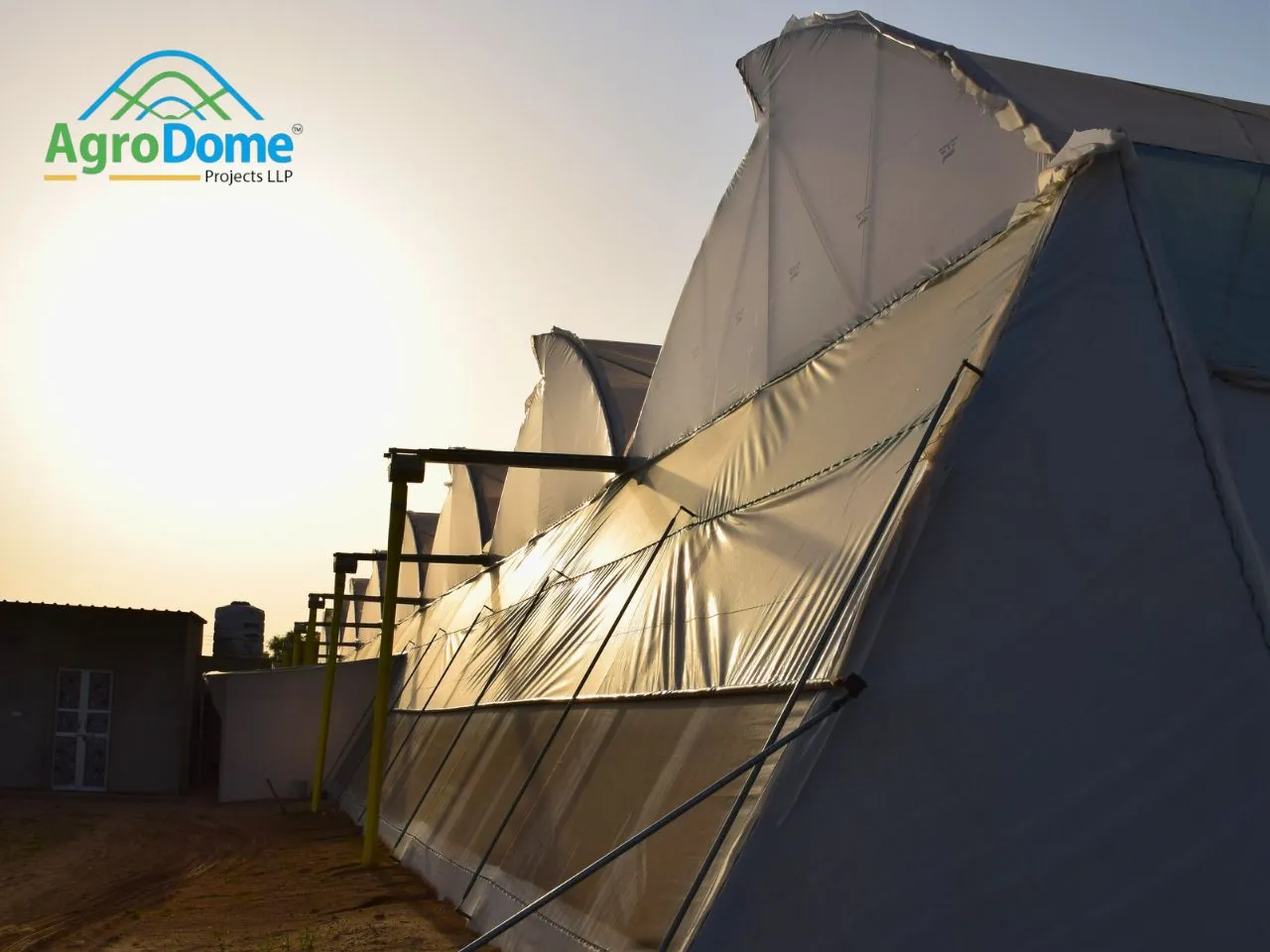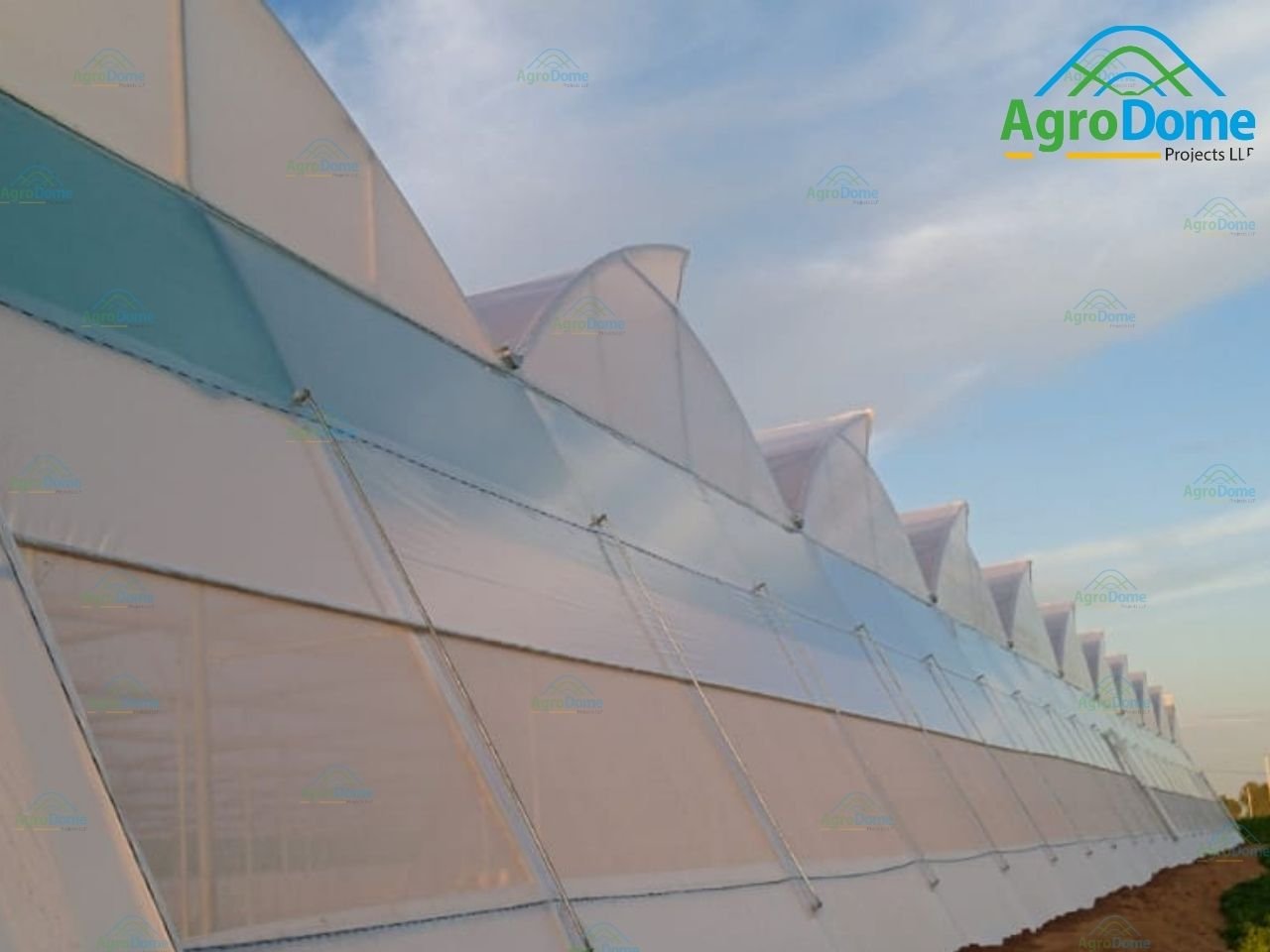Naturally Ventilated Poly-house (Rain-proof) (UV Stabilized Polyhouse)
Naturally Ventilated Poly-house (Rain-proof) (UV Stabilized Polyhouse)
Naturally ventilated polyhouse structures are agricultural greenhouse facilities designed to provide controlled environment agriculture for horticulture which promotes plant growth, primarily utilizing natural air ventilation technique for temperature regulation and ventilation.

Definition of Naturally Ventilated Polyhouse:
Naturally ventilated polyhouses are the modern greenhouse structures for modern protected cultivation techniques which are made up of poly-film materials, that allows sunlight to enter while trapping heat inside. These structures are incorporated with top vents and side vents that allow air circulation to occur naturally, thus regulates the wind flow. The design creates an optimal microclimate for plant growth while minimizing the need for artificial heating or cooling.
Common/ Referred names
Naturally Ventilated Polyhouse is also commonly known as Polyhouse structure, Polyhouse for Vegetable, Protected Cultivation Greenhouse for vegetable farming, Polyhouse for Horticulture, Greenhouse for vegetable farming, Polyhouse for flower farming, and Polyhouse for Nursery, Polyhouse for capsicum cultivation, Polyhouse for tomato cultivation, Polyhouse for cucumber cultivation, etc.

Technical Specifications
-
Structure
The structure of a naturally ventilated polyhouse is basically made up of framework that consists of GI pipes, galvanized steel, hockey support, apron sheet, insect net and poly sheets. The design may vary depending on factors like climate, wind load, and snow load.
-
Irrigation System
An inline drip irrigation system is provided in the naturally ventilated greenhouse for the supply of water to the plants. This system is adopted for optimal and judicious use of water, thus allows successful cultivation in area with scarce water supply. This could also include overhead sprinklers, or a combination of both.
-
Covering Material
The naturally ventilated polyhouse structures have top covering and side covering which includes poly-film, apron sheet and insect net, material is usually a translucent. These materials allow sunlight to penetrate while trapping heat inside the polyhouse.
-
Ventilation System
The strategic placement of top opening vents and side vents in polyhouse, allows for natural airflow. These vents are either available manually or can operated with automation-based system that can regulate the temperature and humidity levels in naturally ventilated polyhouse.
-
Shading System
The shading system in naturally ventilated polyhouse is provided to prevent excessive exposure to sunlight and also allows penetration of sunlight in moderation, depending on the climate and the type of crops grown. The radiation and heat buildup in the polyhouse can be controlled and regulated. This could include shade nets or retractable curtains.
-
Heating System
In colder climates or during winter months, a heating system may be installed to maintain optimal temperatures inside the polyhouse. This could include radiant heaters, forced-air heaters, or hot water systems.
Applications
-
Crop Production
Naturally ventilated polyhouses are primarily used for growing a wide variety of crops, including vegetables, fruits, flowers, and herbs. The controlled environment provided by the polyhouse helps optimize growth conditions and protects crops from adverse weather conditions.
-
Seedling Production
Polyhouses are often used for seedling production, providing an ideal environment for germination and early growth stages of plants before transplanting them to the field.
-
Nursery Operations
Nurseries utilize polyhouses for the propagation and production of ornamental plants, shrubs, trees, and other nursery stock. The controlled environment helps ensure uniform growth and quality of nursery plants.
-
Research and Education
Polyhouses are valuable tools for agricultural research institutions, universities, and educational facilities for conducting experiments, studies, and demonstrations related to crop production, climate management, and greenhouse technology.
-
Protected Cultivation
In regions with extreme weather conditions, naturally ventilated polyhouses offer a protected environment for crop cultivation, shielding plants from excessive heat, cold, wind, and pests.


Description
| Product Type: | Naturally Ventilated Polyhouse |
| Top Vent Type: | Single Vent |
| Available Size: | 500 m2 / 1000 m2 / 2000 m2 / 2500 m2 / 4000 m2 / 8000 m2 |
| Grid: | 8 m x 4 m |
| Gutter center/Height: | 4.0 m / 6.5 m |
| Hockey: | 2 m |
| Top Ventilation: | 0.8 to 1.0 m |
| Side Ventilation: | 3.5 m to 4.0 m |
| Side Covering: | Insect net, 110 GSM with Apron Sheet |
| Top Covering: | 200 Micron Polyfilm, Shade Net for second Layer |
| Second Layer: | Inside Sliding Net cover available |
| Trellising System: | 5 mm, 4 mm Rope wire with 3 mm Plastic wire |
| Drip irrigation: | Inline drip irrigation system, Fogging or Sprinkler with filters. |
| Usage/ application: | Vegetable Farming (Capsicum, cucumber, chillies, tomato etc.), Seedling Production, Flower farming, Herbs cultivation, nursery farming, etc. |
Advantages
-
Cost-effectiveness
Naturally ventilated polyhouses are generally more affordable to construct and easy to maintain due to reduced reliance on mechanical ventilation and climate control systems, compared to fully controlled environment systems.
-
Improved crop quality
The controlled environment provided within the polyhouse structures allows for better regulation of temperature and humidity levels, leading to improved crop quality, yield, and uniformity.
-
Energy efficiency
The naturally ventilated greenhouse structures reduce the need for artificial heating and lighting, by harnessing natural airflow and sunlight, resulting in lower energy consumption and operating costs.
-
Environmental sustainability
Naturally ventilated polyhouses are environmentally friendly, contributing to sustainability efforts in agriculture, with reduced energy usage and reliance on fossil fuels.
Conclusion
Overall, naturally ventilated polyhouses offer an efficient and sustainable solution for extending the growing season, protecting crops from adverse weather conditions, and enhancing agricultural productivity.
Leading the Way in Modern Agriculture
Join us in redefining agriculture through innovation and excellence. Discover the Agrodome Projects LLP difference – where expertise meets commitment, and cultivation reaches new heights.

